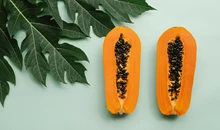
Farmers in Punjab are hesitant to produce cotton on a large scale, despite the crop garnering high prices relative to the minimum support price (MSP) in the preceding two seasons. In an effort to encourage cotton production, the state government has set a target of cultivating approximately 3 lakh hectares, which is 52,000 hectares more than the total area of 2.48 lakh hectares cultivated last season.
Among the eight districts comprising Punjab's cotton belt, Bathinda, Fazilka, Mansa, and Muktsar record the highest areas under cotton cultivation. The remaining districts in the belt include Moga, Barnala, Sangrur, and Faridkot. Fazilka district had the highest cultivation last year, with 93,000 hectares dedicated to cotton. This year, sowing has been completed on 71,000 hectares thus far.
The Director of Punjab Agriculture Department, Dr. Gurvinder Singh, mentioned that their objective was to achieve their target by increasing cultivation by 5,000 to 10,000 hectares in the major cotton-producing districts this year.
Parampal Singh, a cotton farmer from Bathinda's Teana village, shared his experience, stating that he used to cultivate cotton on his 10-acre land but has gradually reduced the dedicated area for the crop over the past four to five years. Currently, he only grows cotton on 3.5 acres. Singh explained that the decline in yield was due to frequent diseases in recent years. In the years when the crop was affected by diseases, the harvest decreased by 30-40 percent compared to the previous average of 15 quintals per acre. As a result, this year he plans to sow paddy on the remaining 6.5 acres.
A senior officer in the Punjab Agriculture department explained that the primary reason for the decrease in cotton cultivation area in Punjab was the prevalence of various diseases in recent years, including white flies and pink bollworms, which have been attacking the crop. Furthermore, farmers face challenges related to timely water supply in the canals within the cotton belt during sowing. The lack of extension services in cotton cultivation has resulted in farmers' unfamiliarity with damage control methods, such as gaining proper knowledge about seeds, diseases, natural pest control methods, and the judicious usage of pesticides.
The officer further added that although the government is aware of the issue, limited effort has been made to strengthen extension services.
Data provided by the Punjab Mandi Board until March 31 of this season indicates a 72 percent reduction in the arrival of raw cotton in the mandis, with a total of 8.01 lakh quintals compared to 28.90 lakh quintals last year.
Furthermore, there was only a marginal increase of 4,000 hectares in cotton cultivation for the 2022-23 season compared to 2021-22. However, the yield per acre decreased by 45 percent due to various crop diseases.
According to the Indian Cotton Association Limited (ICAL), Punjab is projected to produce 2.50 lakh bales (after ginning) until March 31 of this season, a significant decrease from the 8.50 lakh bales produced during the corresponding period in 2021-22. This estimate is also far below the earlier projection of approximately 4.04 lakh bales. It is worth noting that one bale is equal to 170 kg of ginned cotton (cotton separated from cotton seed).
The price of raw cotton (unginned) has remained between Rs 8,000 to 9,000 per quintal, which is way above MSP of Rs 5,726 and Rs 6,380 per quintal for medium & long staple raw unginned cotton, respectively.











